
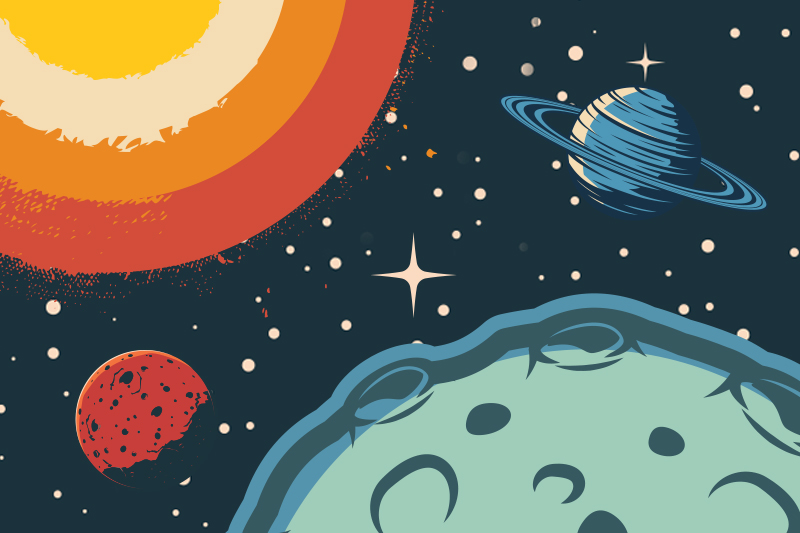

Watch this space
UD researchers work to uncover mysteries of the universe
April 17, 2024
If we really are stardust—as Joni Mitchell sang and much research suggests—it seems only natural that we would wonder about this carbon-based substance and the faraway dimensions from which it arrives on our planet.
DNA testing can only explain the thinnest slice of human origins, after all. And none of us was there when the universe was born some 13 billion years ago
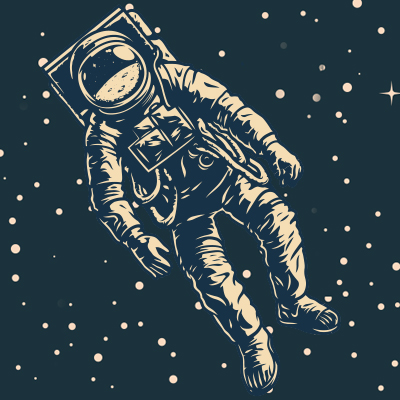
But perhaps we’re hardwired to try to make sense of it all.
When, exactly, did it all start—and where and how and why? How do galaxies work, anyway? How do planets and stars and moons affect each other? How long does a star live and why does it die? What was in the moondust of Neil Armstrong’s boot? What’s happening in the darkest corners of the universe? Are we alone or is there anyone else out there?
UD researchers work to uncover these mysteries—and many more—from multiple angles. As the lead institution in the Delaware Space Grant Consortium—one of 52 NASAfunded consortia in the nation—UD also works to recruit, train and support the development of future explorers, scholars and aerospace job seekers.
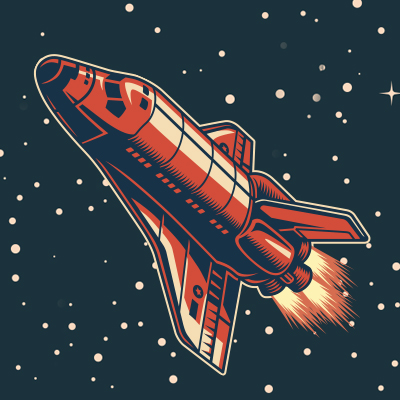
Theoretical physicist William Matthaeus directs Delaware Space Grant. His research has been foundational to numerous NASA missions and projects, and he is an expert in heliophysics—the study of the sun, with its turbulent, magnetic atmosphere, and the properties of the powerful solar wind that shoots out from its surface.
Heliophysics is a big deal for UD and NASA, the latter of which has dubbed a 15-month period, including all of 2024, as “Heliophysics Big Year” for multiple reasons: Two solar eclipses crisscross the United States, drawing much public attention, and the Parker Solar Probe makes its closest approach to the sun later this year.
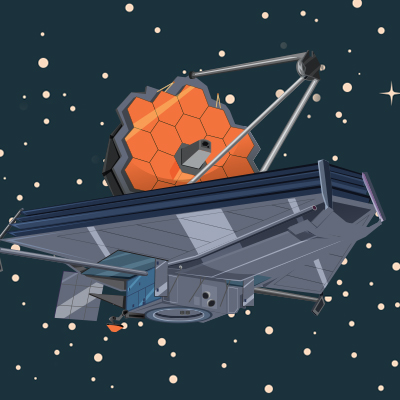
Matthaeus, one of the experts affiliated with the Parker Solar Probe, is also an expert in connections, fostering partnerships, fellowships, scholarships and other linkages for students and researchers across the region.
“It’s fun to make unanticipated connections,” he says. “And it’s important to teach students that you shouldn’t assume you know all the connections you need to make.”
Those networks help everyone navigate the extraordinary breadth of space exploration, which spans astrophysics, condensed matter, planet formation, data science, plasma physics, turbulence theory, magnetic fields, nuclear physics, cosmology, space weather, spectroscopy, cosmic ray physics, computer science, elementary particle theory, space communications and gravitational waves.
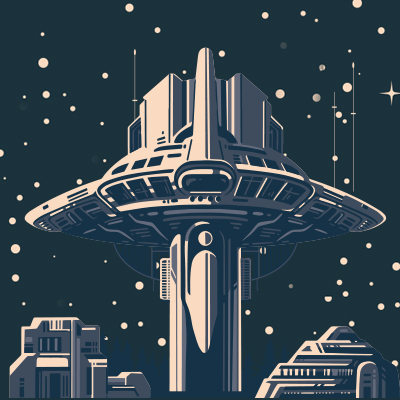
You need access to national laboratories, state-of-the art instruments, high-performance computers and expert guides—the kind of ecosystem UD has.
You need experimental physicists like John Clem to study cosmic rays, solar events, magnetic fields and cosmic neutrinos, high-energy particles that offer clues to phenomena far beyond our solar system.
You need astronomers like Sally Dodson-Robinson, an expert in giant planets (Jupiter, Saturn, Uranus and Neptune), planet formation and the study of exoplanets (those beyond our solar system).
You need engineers like Tingyi Gu to develop semiconductors for ultra-fast (terabyte per second) space communications. Indeed, several of her experiments have flown on the International Space Station.
Frankly, you need a lot of Blue Hen brainpower.

The fingerprints of hundreds of UD researchers, students and alumni are on telescopes around the world, space crafts flying in formation as you read this, launching pads of various dimensions, neutrino detectors at the South Pole and, virtually at least, the distant reaches of the known universe.
If Joni Mitchell is right and “We are stardust. We are golden”—we might suggest a small tweak to her lyrics.
We are stardust. We are Blue and Golden.
Contact Us
Have a UDaily story idea?
Contact us at ocm@udel.edu
Members of the press
Contact us at 302-831-NEWS or visit the Media Relations website


